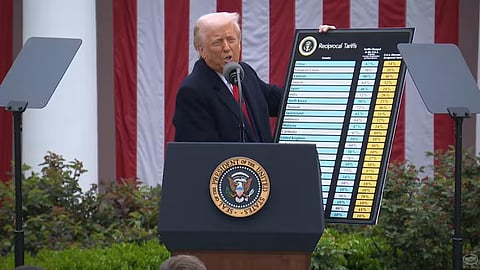

The US economy contracted in the first three months of Donald Trump’s second term, as the president pursued an aggressive trade agenda, insisting that sweeping tariffs on global imports would ultimately strengthen the country’s economic position.
Gross domestic product (GDP), a key indicator of overall economic performance, declined by 0.3 percent in the first quarter of the year, a sharp reversal from the 2.4 percent growth recorded in the final quarter of 2024. This marked the first contraction since early 2022 and placed the US on the verge of a technical recession, typically defined as two consecutive quarters of negative growth.
The downturn in activity coincided with a significant drop in consumer sentiment, which plunged by 32 percent in April to its lowest level since the 1990 recession.
Throughout the first quarter of 2025, Trump repeatedly threatened and briefly imposed sweeping tariffs on Canada and Mexico, while escalating duties on Chinese exports.
As it stands, a universal tariff of 10 per cent now applies to most imports, alongside a punitive 145 per cent tariff on goods from China. Reacting to sharp fluctuations in US financial markets, Trump suspended a set of proposed “reciprocal tariffs” of up to 49 per cent on selected countries, delaying them for 90 days.
In a move welcomed by domestic carmakers, the president signed an executive order on Tuesday allowing automotive firms to claim a credit if they import components but assemble vehicles within the US — easing the impact of a 25 per cent tariff on all automotive imports.
While the White House maintains that Trump’s tariff strategy is designed to strengthen the US negotiating position, leaders across the globe have warned they will respond forcefully if the president continues what they describe as economic bullying.
“If one chooses to remain silent, compromise and cower, it will only make the bully want to push his luck more,” Chinese foreign minister Wang Yi said on Monday.